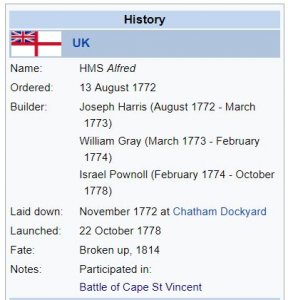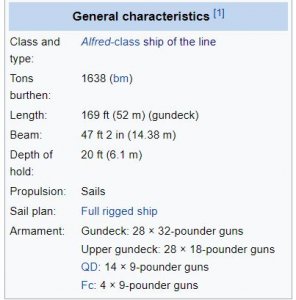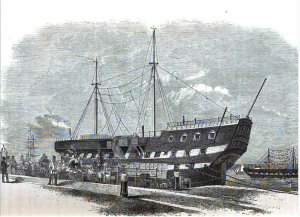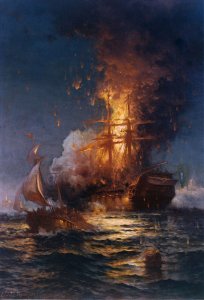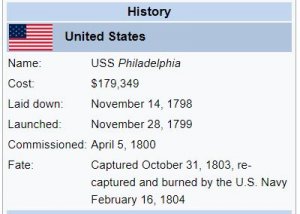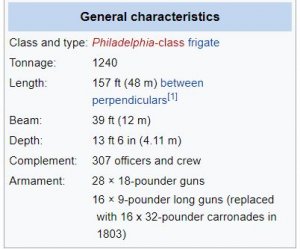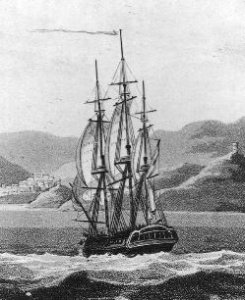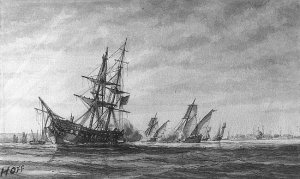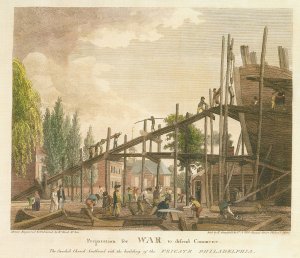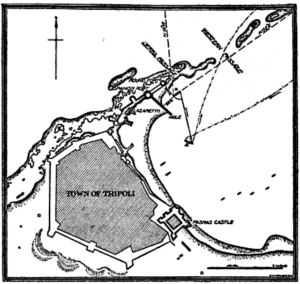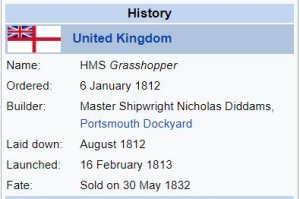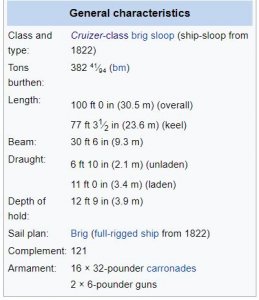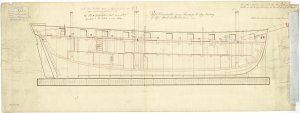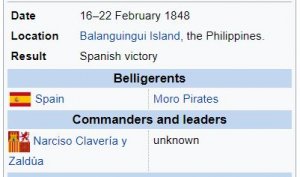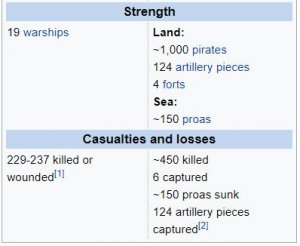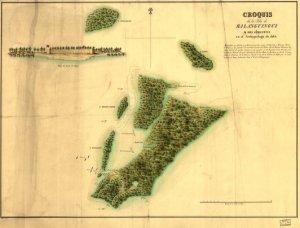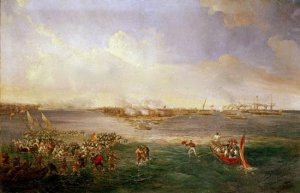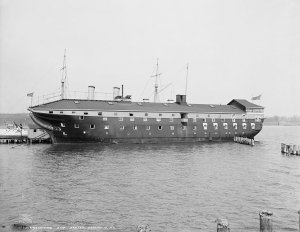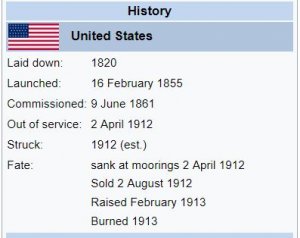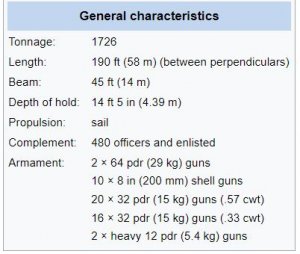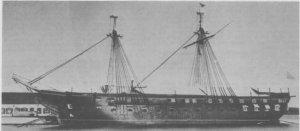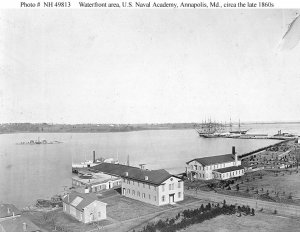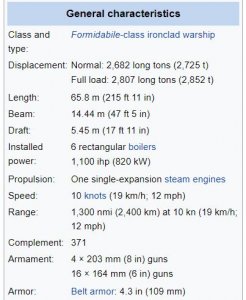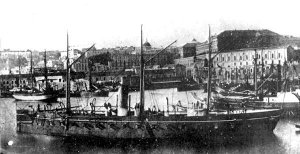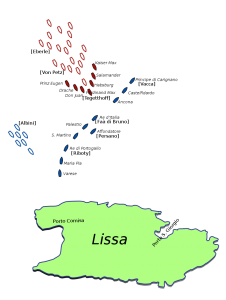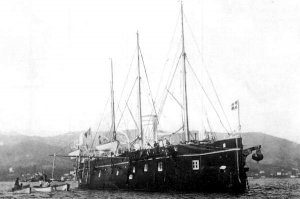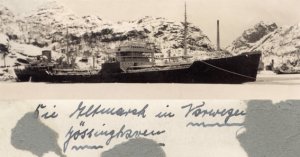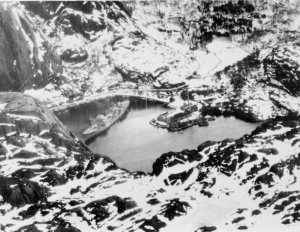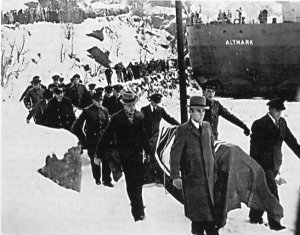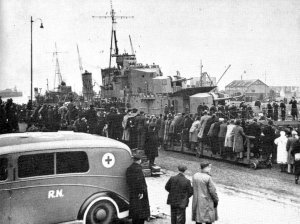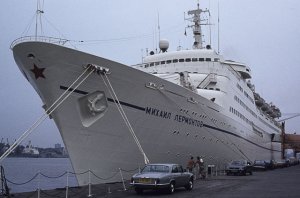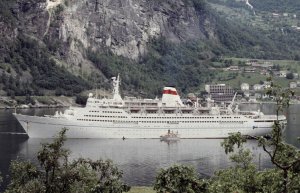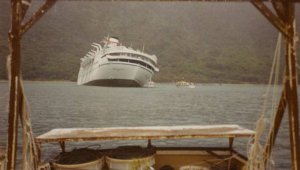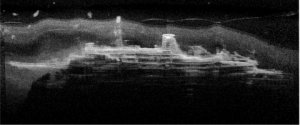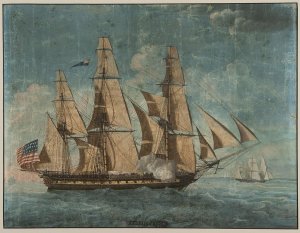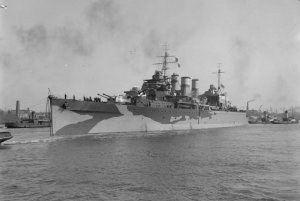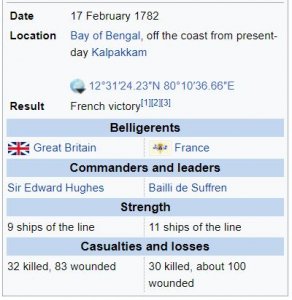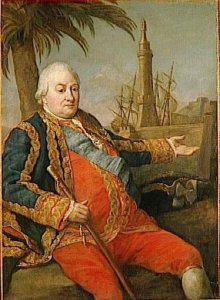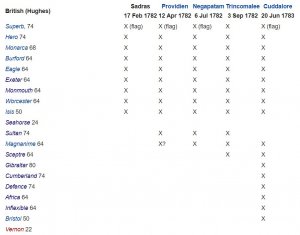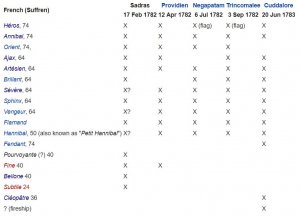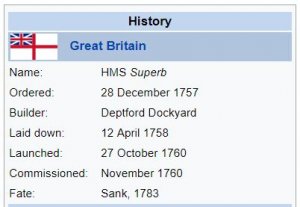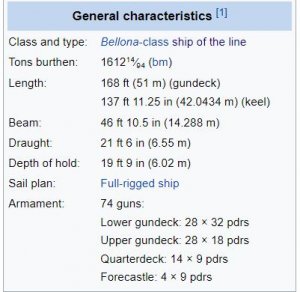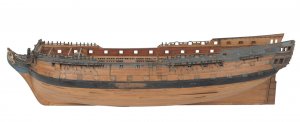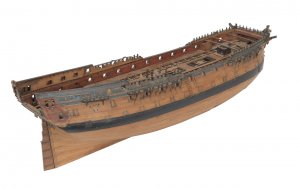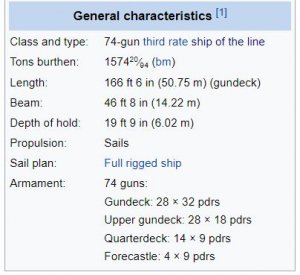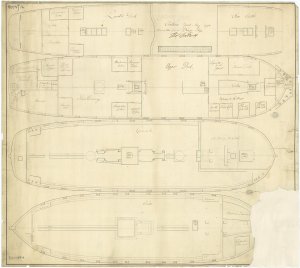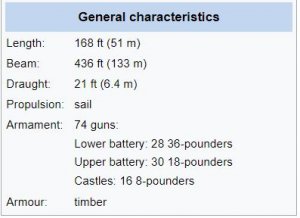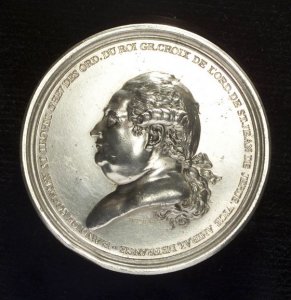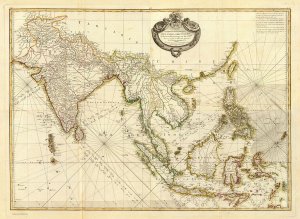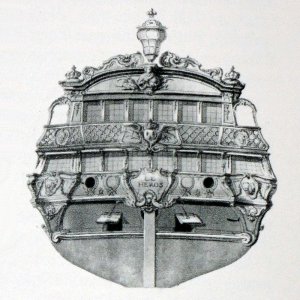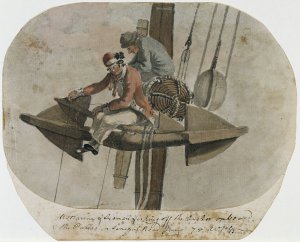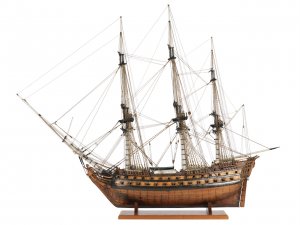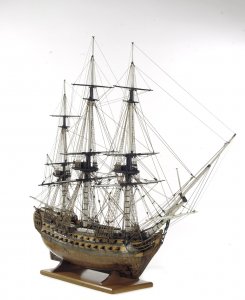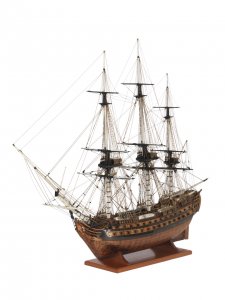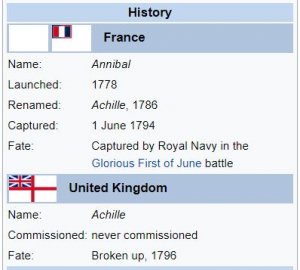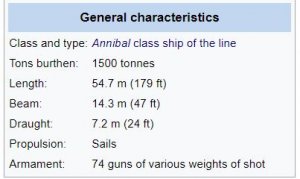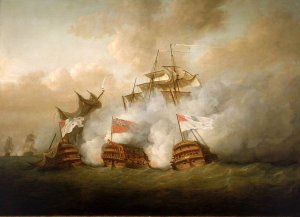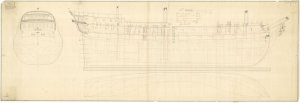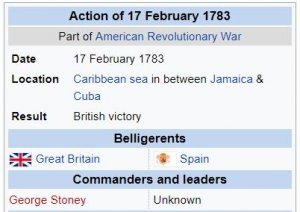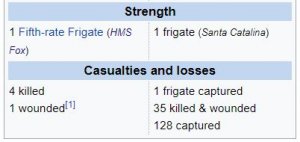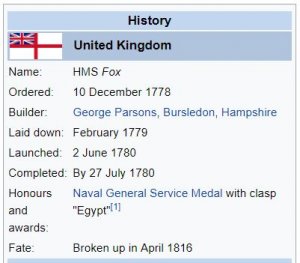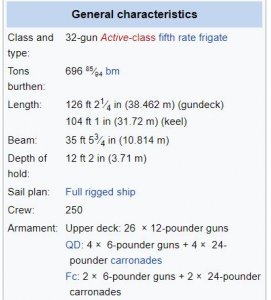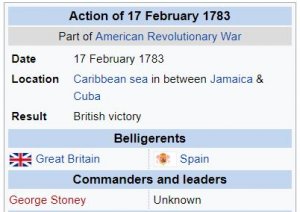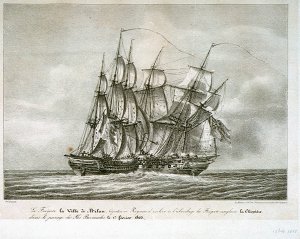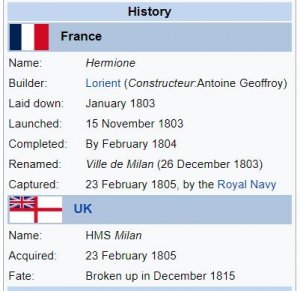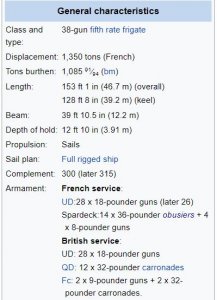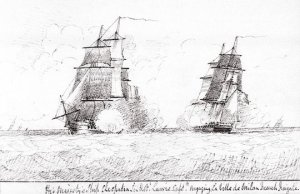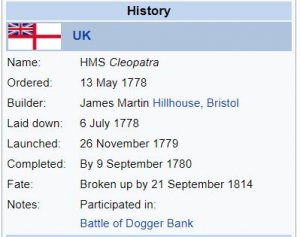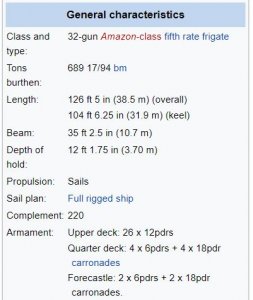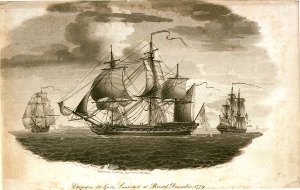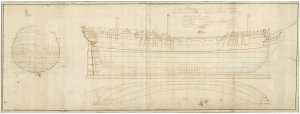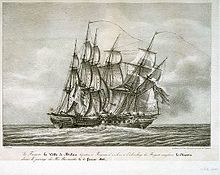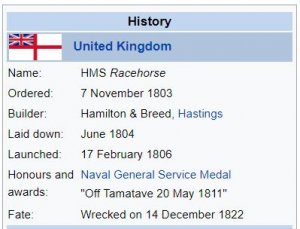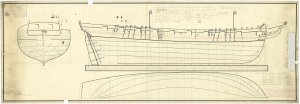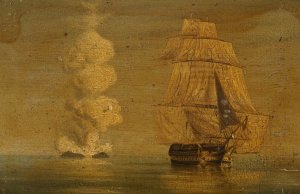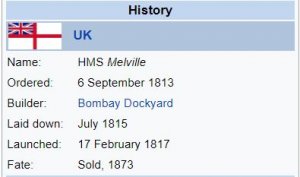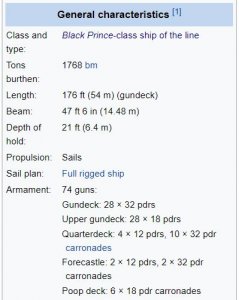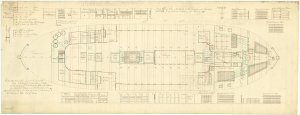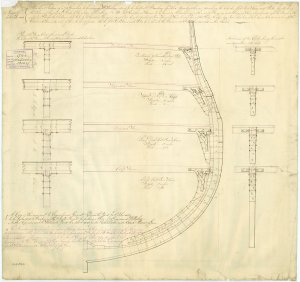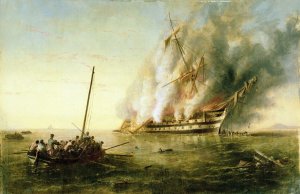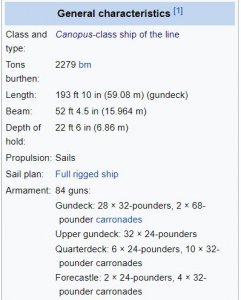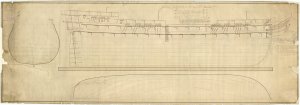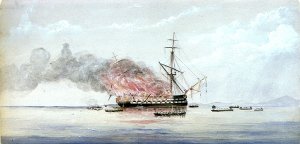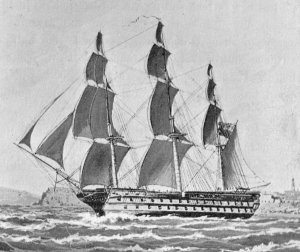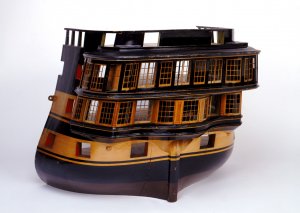Today in Naval History - Naval / Maritime Events in History
16 February 1794 – Launch of French Preneuse, a 44-gun frigate of the French Navy, lead ship of her class.
The Preneuse was a 44-gun frigate of the French Navy, lead ship of her class. She served as a commerce raider at Île de France.
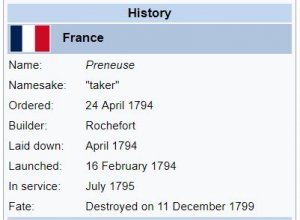
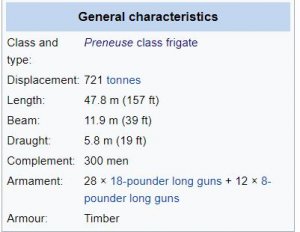
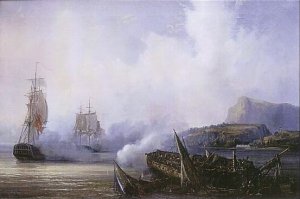
Destruction of Preneuse, by Auguste Mayer
Career
In 1795, Preneuse was stationed at Rochefort under Captain Larcher. She was then transferred to the Indian Ocean station, commanded by Rear-Admiral Sercey.[2]
In 1796, she was a Mauritius under Captain Ravenel, at Port-Nord-Ouest.
In March 1798, under Lhermitte, she ferried ambassadors from Mysore sent by Tippu Sultan to île de France to request help against the British. Near Tellicherry, Preneuse found two East Indiamen, Raymond and Woodcot at Tellicherry; she attacked and captured both on 20 April,[5] after a one-hour battle. She left the diplomatic mission at Mangalore, and sailed to Batavia.
She was soon joined by the 22-gun corvette Brûle-Gueule, which ferried Rear-Admiral Sercey. The squadron sailed to Surabaya, where a settlement was established. A small mutiny broke out when Preneuse crew refused to let go of the British flags captured at Tellicherry; Lhermitte had personally to confront the mutineers with his sabre to re-establish discipline. He then had a firing squad execute five of the mutineers.
After a short stay at Surabaya, Preneuse and Brûle-Gueule sailed for a three-month cruise, capturing 40 British merchantmen and participating in the Macau Incident. After returning to Subaraya, Sercey set his flag on Preneuse and the squadron sailed for île de France.
They arrived in May 1799, encountering the British blockade composed of three ships of the line, one frigate and one brig. The French ships reached Rivière Noire District, where they were joined by a number of coastal ships offering assistance. Preneuse and Brûle-Gueule anchored in the bay. They sent seven 18-pounders ashore and the French built an improvised fort to guard the entrance of the bay; it sustained a 3-week siege before the British retreated.
In August 1799, Preneuse departed for a patrol near Cape of Good Hope and Madagascar. On 4 September, she fought against five British ships. In September, she fought against a 64-gun ship of the line.
Preneuse also attempted to supply arms to the Graaff Reinet Republic of Adriaan van Jaarsveld. On the 20th, she sailed into Algoa Bay under Danish colours, when 16-gun ship-sloop HMS Rattlesnake recognised her. Preneuse exchanged cannon fire with Rattlesnake and the armed store ship Camel, before retreating.
On 9 October 1799, as Preneuse neared Good Hope, the 54-gun HMS Jupiter encountered her and gave chase. After 22 hours, Jupiter gained on Preneuse, and the two vessels exchanged fire. Preneuse managed to outmaneuver Jupiter and rake her; the British then retreated to avoid being boarded, and managed to escape.
Main article: Battle of Port Louis
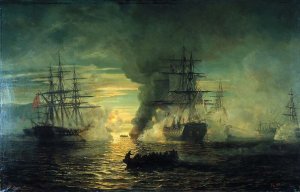
Algoa Bay, 20–21 September 1799. French frigate Preneuse against HMS Camel and the privateer Surprise
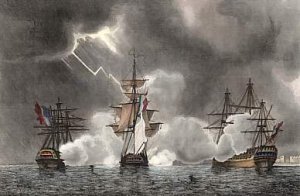
Destruction of the Preneuse
On 11 December 1799, as she returned to Île de France, Preneuse encountered the 74-gun HMS Tremendous, under Captain John Osborn, off Port Louis. Tremendous gave chase. As Preneuse closed to the land, the 50-gun HMS Adamant, under Captain William Hotham, cut her escape route. While Preneuse was attempting to sail under the protection of the coastal forts at Baie-du-Tombeau, erratic winds drove her ashore. The British closed in and battered Preneuse, which Lhermitte then deemed lost. He had the crew abandon ship, while he stayed behind with his officers, struck the colours and scuttled the frigate. British boats attempted to recover Preneuse, but she came under fire from the coastal batteries and they abandoned the attempt.
The British took Preneuse's officers to Adamant, where Commodore Botham treated them with courtesy. He released Lhermitte on parole the next day.
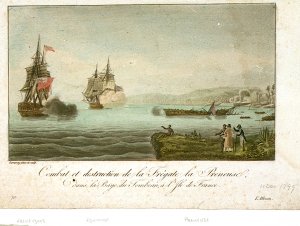
Combat et destruction de la Fregate la Preneuse, dans la Baye du Tombeau a l' Ile de France, 11 Dec 1799 (PAD5632)
The Preneuse class was a type of two 42-gun frigates.
Preneuse class, (40-gun design of 1794 by Raymond-Antoine Haran, with 28 x 18-pounder and 12 x 8-pounder guns).
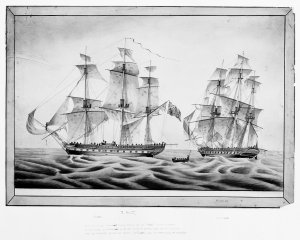
Capture of the Africaine French frigate by the Phoebe... 1 Nov 1801 (PAH4006)

lines & profile It is likely that these plans show her prior to her refit. NMM, Progress Book, volume 5, folio 712, states that 'Africaine' was refitted at Deptford Dockyard between 17 February 1802 and 17 February 1803.
https://en.wikipedia.org/wiki/French_frigate_Preneuse_(1795)
https://en.wikipedia.org/wiki/Battle_of_Port_Louis
https://en.wikipedia.org/wiki/Preneuse-class_frigate
https://collections.rmg.co.uk/colle...el-289602;browseBy=vessel;vesselFacetLetter=A
16 February 1794 – Launch of French Preneuse, a 44-gun frigate of the French Navy, lead ship of her class.
The Preneuse was a 44-gun frigate of the French Navy, lead ship of her class. She served as a commerce raider at Île de France.



Destruction of Preneuse, by Auguste Mayer
Career
In 1795, Preneuse was stationed at Rochefort under Captain Larcher. She was then transferred to the Indian Ocean station, commanded by Rear-Admiral Sercey.[2]
In 1796, she was a Mauritius under Captain Ravenel, at Port-Nord-Ouest.
In March 1798, under Lhermitte, she ferried ambassadors from Mysore sent by Tippu Sultan to île de France to request help against the British. Near Tellicherry, Preneuse found two East Indiamen, Raymond and Woodcot at Tellicherry; she attacked and captured both on 20 April,[5] after a one-hour battle. She left the diplomatic mission at Mangalore, and sailed to Batavia.
She was soon joined by the 22-gun corvette Brûle-Gueule, which ferried Rear-Admiral Sercey. The squadron sailed to Surabaya, where a settlement was established. A small mutiny broke out when Preneuse crew refused to let go of the British flags captured at Tellicherry; Lhermitte had personally to confront the mutineers with his sabre to re-establish discipline. He then had a firing squad execute five of the mutineers.
After a short stay at Surabaya, Preneuse and Brûle-Gueule sailed for a three-month cruise, capturing 40 British merchantmen and participating in the Macau Incident. After returning to Subaraya, Sercey set his flag on Preneuse and the squadron sailed for île de France.
They arrived in May 1799, encountering the British blockade composed of three ships of the line, one frigate and one brig. The French ships reached Rivière Noire District, where they were joined by a number of coastal ships offering assistance. Preneuse and Brûle-Gueule anchored in the bay. They sent seven 18-pounders ashore and the French built an improvised fort to guard the entrance of the bay; it sustained a 3-week siege before the British retreated.
In August 1799, Preneuse departed for a patrol near Cape of Good Hope and Madagascar. On 4 September, she fought against five British ships. In September, she fought against a 64-gun ship of the line.
Preneuse also attempted to supply arms to the Graaff Reinet Republic of Adriaan van Jaarsveld. On the 20th, she sailed into Algoa Bay under Danish colours, when 16-gun ship-sloop HMS Rattlesnake recognised her. Preneuse exchanged cannon fire with Rattlesnake and the armed store ship Camel, before retreating.
On 9 October 1799, as Preneuse neared Good Hope, the 54-gun HMS Jupiter encountered her and gave chase. After 22 hours, Jupiter gained on Preneuse, and the two vessels exchanged fire. Preneuse managed to outmaneuver Jupiter and rake her; the British then retreated to avoid being boarded, and managed to escape.
Main article: Battle of Port Louis

Algoa Bay, 20–21 September 1799. French frigate Preneuse against HMS Camel and the privateer Surprise

Destruction of the Preneuse
On 11 December 1799, as she returned to Île de France, Preneuse encountered the 74-gun HMS Tremendous, under Captain John Osborn, off Port Louis. Tremendous gave chase. As Preneuse closed to the land, the 50-gun HMS Adamant, under Captain William Hotham, cut her escape route. While Preneuse was attempting to sail under the protection of the coastal forts at Baie-du-Tombeau, erratic winds drove her ashore. The British closed in and battered Preneuse, which Lhermitte then deemed lost. He had the crew abandon ship, while he stayed behind with his officers, struck the colours and scuttled the frigate. British boats attempted to recover Preneuse, but she came under fire from the coastal batteries and they abandoned the attempt.
The British took Preneuse's officers to Adamant, where Commodore Botham treated them with courtesy. He released Lhermitte on parole the next day.

Combat et destruction de la Fregate la Preneuse, dans la Baye du Tombeau a l' Ile de France, 11 Dec 1799 (PAD5632)
The Preneuse class was a type of two 42-gun frigates.
Preneuse class, (40-gun design of 1794 by Raymond-Antoine Haran, with 28 x 18-pounder and 12 x 8-pounder guns).
- Preneuse, (launched 1794 at Rochefort) – destroyed by British Navy 1799.
- Africaine, (launched 1798 at Rochefort) – captured by British Navy 1801, becoming HMS Africaine.

Capture of the Africaine French frigate by the Phoebe... 1 Nov 1801 (PAH4006)

lines & profile It is likely that these plans show her prior to her refit. NMM, Progress Book, volume 5, folio 712, states that 'Africaine' was refitted at Deptford Dockyard between 17 February 1802 and 17 February 1803.
https://en.wikipedia.org/wiki/French_frigate_Preneuse_(1795)
https://en.wikipedia.org/wiki/Battle_of_Port_Louis
https://en.wikipedia.org/wiki/Preneuse-class_frigate
https://collections.rmg.co.uk/colle...el-289602;browseBy=vessel;vesselFacetLetter=A




